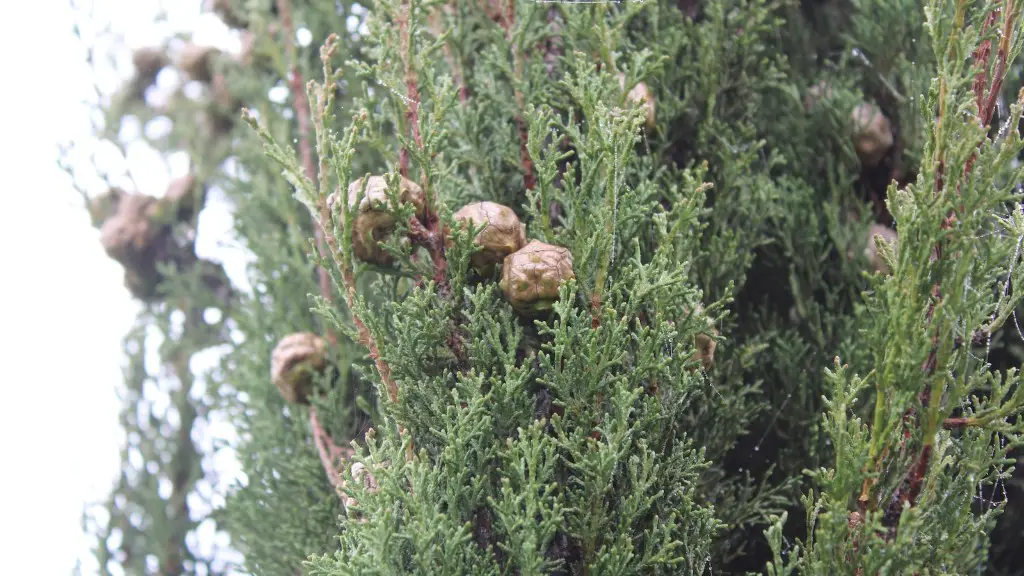Lemon tree disease can affect the productivity, vigor, and overall health of your trees. With proper diagnosis and treatment, you can save your lemon trees from disease and make sure that they continue to produce healthy fruits. In this blog post, you will learn how to identify and treat common lemon tree diseases.
First, good diagnosis is key when it comes to treating lemon tree diseases. To diagnose a problem correctly, you will need to inspect the tree carefully. Look for signs of discolored leaves, wilting, or other signs that something is wrong. If you find any abnormalities, take photos and consider bringing a sample to a qualified professional for diagnostics.
Second, upon diagnosis, you will need to determine the best method of treatment. Many diseases can be treated chemically, with fungicides, insecticides, and other products. Depending on the issue, you may also be able to use biological controls to help address the problem. The right treatment will depend on the type of disease, so make sure to research potential solutions before starting treatment.
Third, it is essential to follow directions and use caution when applying chemical treatments. Be careful to follow the instructions on the product label and do not apply more than the recommended amount of any chemical product. Additionally, make sure to wear protective clothing when handling any chemicals and be sure not to come into contact with the product.
Fourth, once your lemon tree has been treated, it is important to monitor the tree closely. Regularly inspect the tree for signs of stress or other issues and take action if necessary. Additionally, make sure to follow a regular pruning and maintenance routine to ensure the health of your tree.
Finally, if necessary, you may need to consider treating the soil of your lemon tree. Infectious bacteria and other diseases can exist in the soil and, without proper treatment, can cause harm to your tree. In this case, you will need to apply soil treatments to help eliminate the issue.
Insect Pests
Insect pests can also be a problem, especially as the weather warms up. You will know you have an infestation if you see ants, aphids, or other insects on your tree. The first step in this case is to remove the pests by hand, or use a combination of mechanical and chemical control. Insecticides can be used to eliminate bugs and help protect your tree from future infestations.
Second, you should also consider other cultural changes that can help address insect pests. This can include removing any debris or objects on the ground near your lemon tree, as these can provide a nesting ground for pests. Additionally, you can also increase irrigation and make sure to fertilize your trees regularly to help the tree have a more robust defense against pests.
Third, you may also wish to maintain good air circulation around your lemon tree. Pruning branches and thinning out dense foliage can help improve airflow. Not only will this help to get rid of dead or dying branches, it can also help to discourage pests as they like to hide in dark, damp areas.
Fourth, remember that prevention is always a better approach than trying to treat an infestation after it has occurred. Make sure to inspect your trees regularly and look for any signs of pest activity. Also, use exclusion methods such as screens, netting, and traps to prevent bugs from entering the area in the first place.
Finally, you can try using natural predators such as birds and certain beneficial insects to keep your lemon trees free from pests. These creatures can help provide natural control, although they aren’t always the most reliable method. If you decide to go this route, make sure to research the types of beneficial insects that are best suited to your area.
Diseased Soil
In some cases, the problem may not be with the tree itself, but rather with the soil it is growing in. Diseased soil can lead to many issues for lemon trees, including root rot, fungal diseases, and nutrient deficiencies. The best way to address this is to test the soil and then to amend it accordingly.
Second, you may need to use certain amendments in the soil to help make it more suitable for your lemon tree. Peat moss, compost, manure, or other organic materials can be used to improve the soil structure and chemistry. You may also need to add specific minerals or nutrients to ensure that your lemon trees are getting the right levels of nutrients to stay healthy and productive.
Third, you should avoid working the soil when it is wet or compacted, as this can cause damage. Additionally, avoid using any mineral fertilizers that are high in nitrogen, as this can lead to excessive growth that may weaken the tree and make it vulnerable to diseases. Instead, use slow release fertilizers that contain a more balanced mix of nutrients.
Fourth, consider adding a layer of mulch to the soil to help regulate its temperature and moisture levels. This will also help to limit the growth of weeds and can help protect the roots from extreme temperatures. Be sure to use organic mulch such as wood chips, straw, or bark, avoiding any inorganic materials like rubber that may cause harm to the tree.
Finally, you should also look out for excessive watering, as too much water can cause root rot. The ideal soil for a lemon tree should be moist but never waterlogged. Appropriate irrigation can help to both support your lemon tree and help to mitigate the impact of soilborne diseases.
Fungal Diseases
Fungal diseases can cause a variety of issues for lemon trees, and you should take steps to address a problem once you have identified it. First, you should remove any affected branches, leaves, and other debris from the tree. This will help to slow the spread of the disease and ensure that the tree’s resources are focused on healthy growth.
Second, proper pruning should also be practiced to keep a healthy canopy on your lemon tree. This will help to ensure that the tree is getting adequate light and air circulation, which can help to limit the risk of fungal diseases developing. Additionally, removing any affected leaves and branches will also help to prevent them from spreading the disease.
Third, you should also look out for any wet, humid conditions and, if possible, try to reduce them. This can include avoiding overhead irrigation, maintaining proper drainage, and avoiding irrigating late in the day. Additionally, you may wish to cover the tree with a fungicide treatment to help control the disease.
Fourth, you may also want to consider the use of biological controls such as beneficial fungi, bacteria, and other organisms to help limit the spread of fungal diseases. Research the best options that might be available and select the ones that are most suitable for your location. This can help to reduce the amount of chemical treatments that you need to apply.
Finally, make sure to monitor tree health over time and take action if necessary. The earlier you address any issues, the easier they will be to control. Keeping a vigilant eye on the tree and its surroundings can help you spot any signs of disease early and allow you to more effectively address the problem.
Root Diseases
Finally, root diseases can be a major issue for lemon trees. Poor soil drainage, wet conditions, and too much fertilizer can all lead to root disease. To address this, you should start by examining the roots of the tree and looking for any signs of damage or disease. If necessary, you may need to prune back affected root systems, or add soil amendments to make the soil more hospitable.
Second, proper irrigation scheduling is essential in order to prevent root rot. The soil should be damp, not wet; this will help to keep the trees well hydrated. Additionally, make sure to reduce fertilizer levels, as too much of it can cause issues with the roots.
Third, one of the best ways to address root diseases is to introduce beneficial fungi such as mycorrhizal fungi into the soil. These fungi can help to stimulate root growth and also can act as biological controls that can help to limit the spread of harmful fungi. Additionally, you can use compost or other organic materials to improve the soil.
Fourth, you may also want to consider the use of soil treatments to help address root diseases. Chemical products such as fungicides and bacterial treatments can be applied to the soil in order to help reduce the spread of the disease. Make sure to follow the product label and be careful not to overapply any treatments.
Finally, a healthy lemon tree is the best defense against root disease. Make sure to give your tree the best care possible, and take steps to protect it from any potential issues. Additionally, monitor the tree regularly and take action if any signs of a problem are noticed.





Thank you for sharing such a nice post!